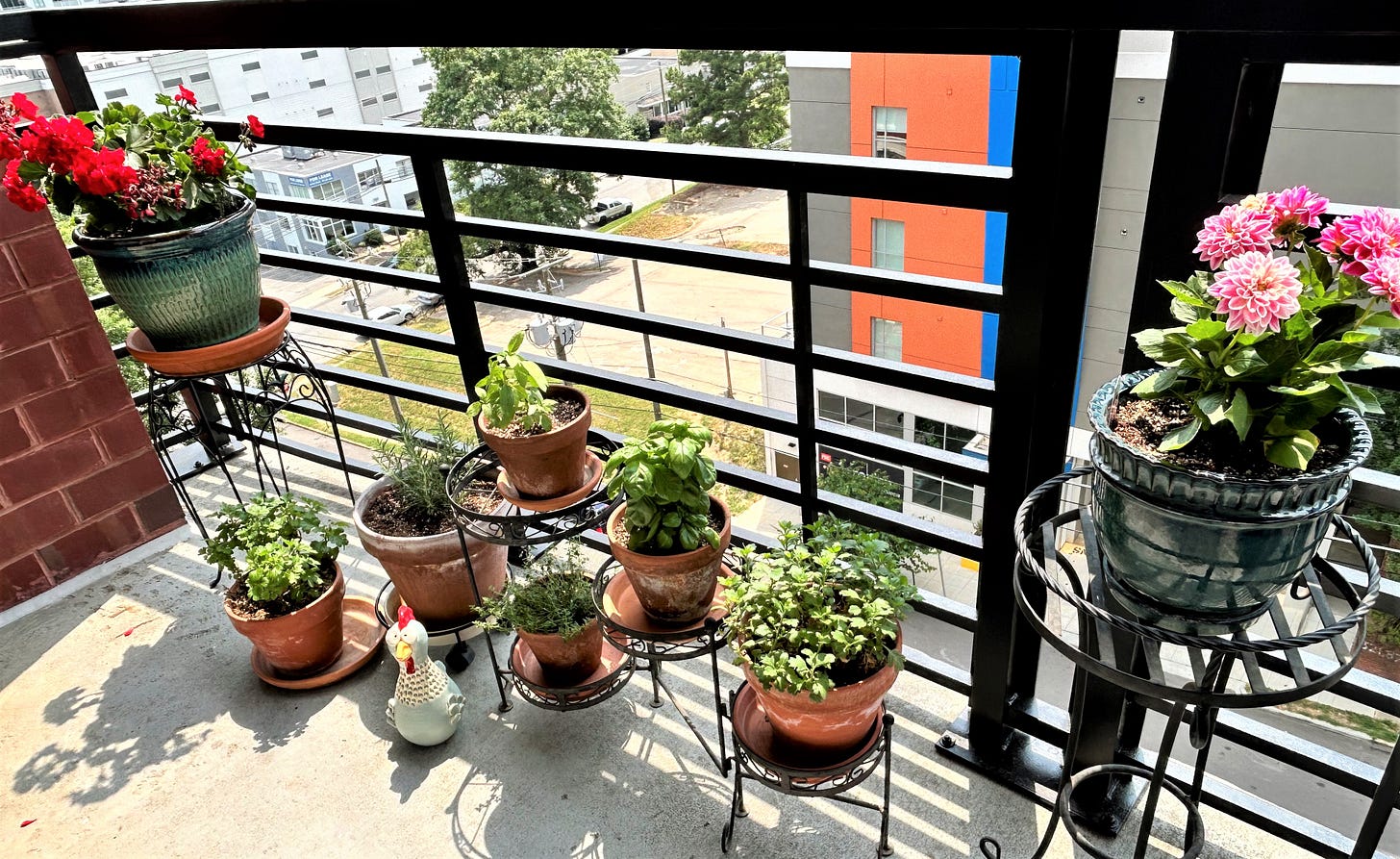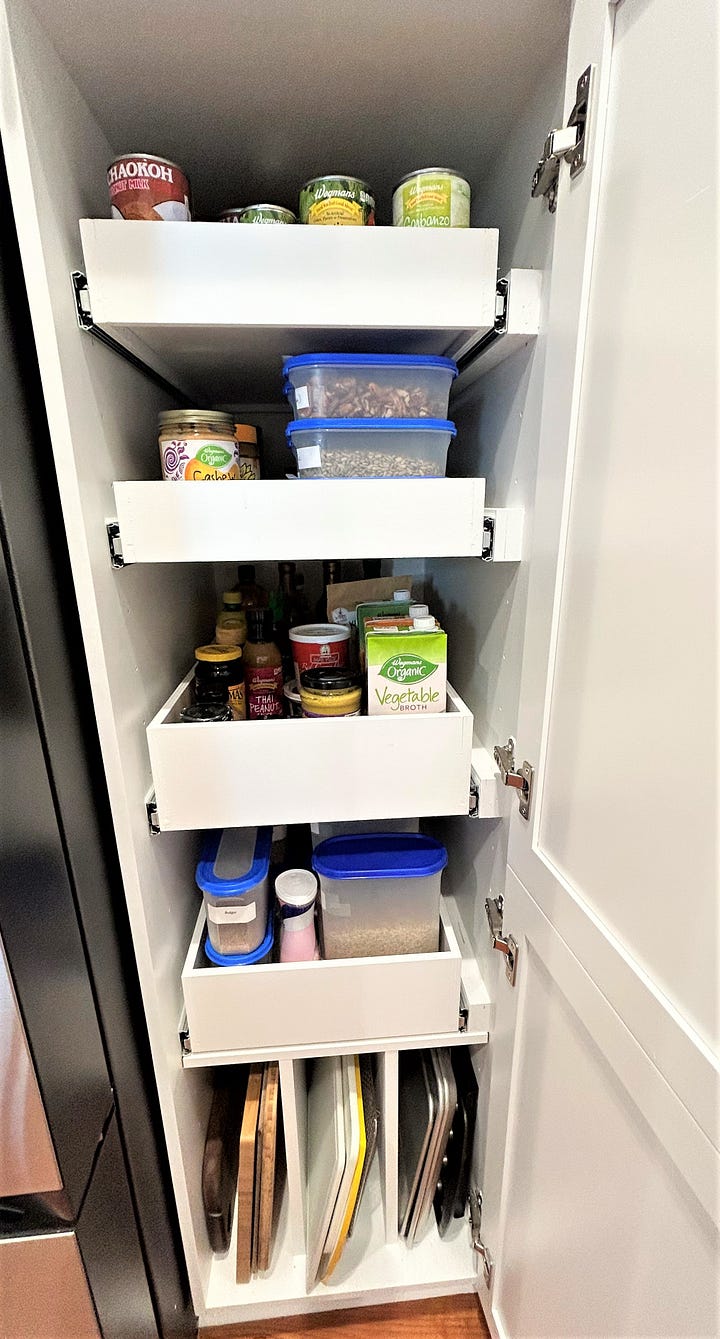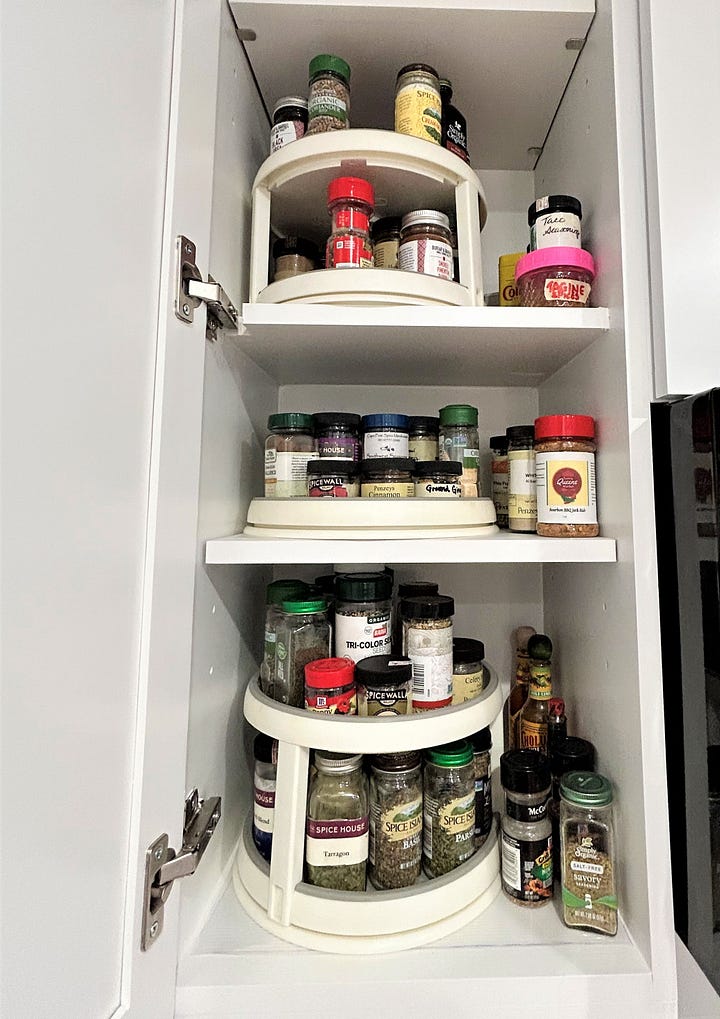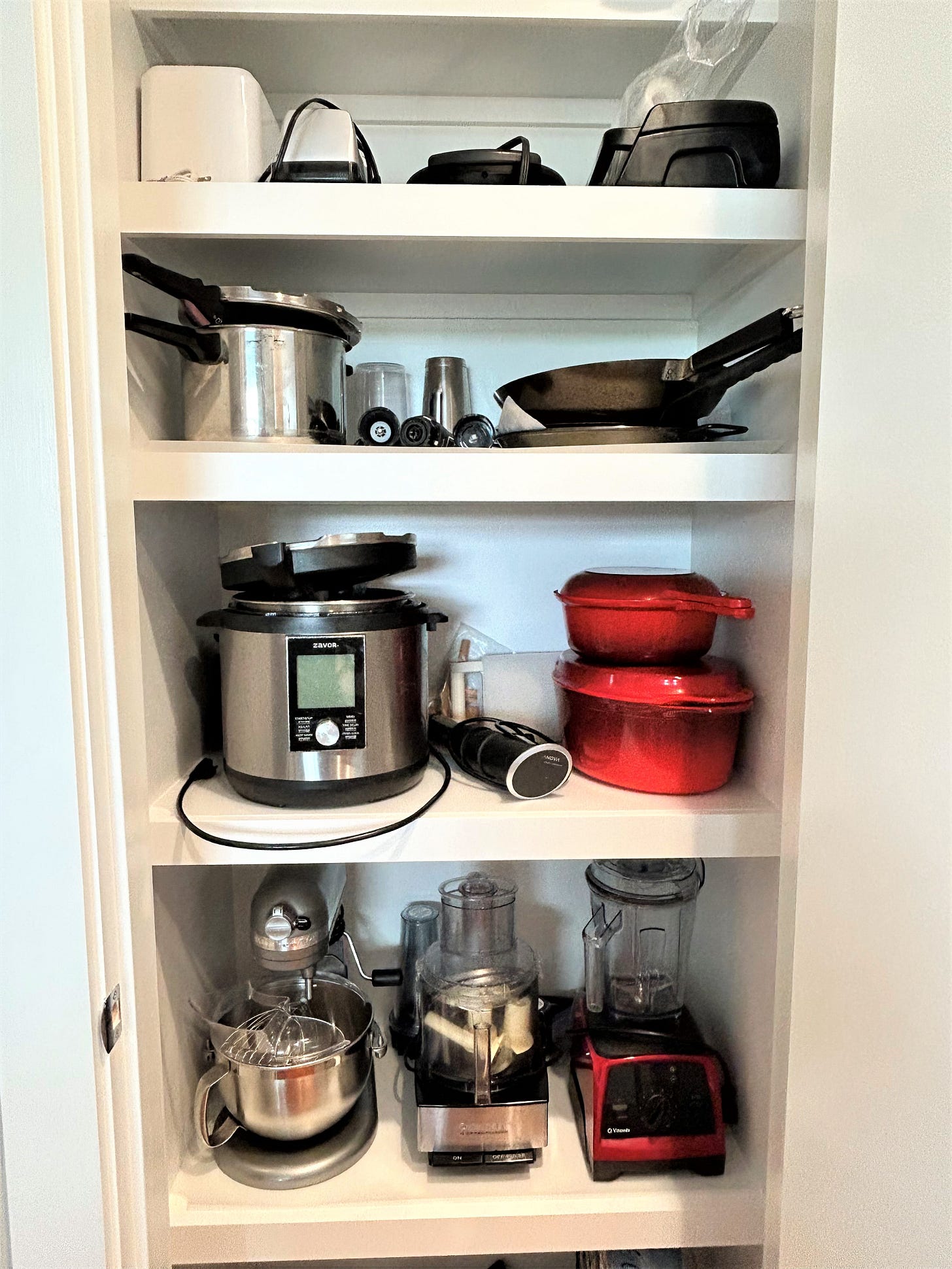
We have a new home and a new kitchen!
Thanks to our fearless realtor, Betsy Simmons of Simmons Realty Group, we were able to get a deal done! Once our offer was accepted, a whirlwind was set into motion. I’ve had my hands full with planning and managing the remodeling at the new place, sorting, packing, donating, and moving our household, and shopping for furniture that fits our downsized space and storage needs - all at once. Layer on to that some serious supply chain, product damage, and delivery issues, and it’s made for quite a wild ride. Definitely the most challenging remodel and move I’ve experienced - and this one was only across town. It certainly has been a test of flexibility, creativity, and compromise, moving from plan A to ZZ in some cases.
Exciting, yes! Tiring, definitely! Yet, I am so happy about having a place of our own once again and grateful for the opportunity to update it to better fit our needs and lifestyle.
Since our new home has less square footage than we originally were considering some serious downsizing and organization has been in order. The kitchen and dining areas, which are central to our culinary-focused lives, received the bulk of the beautiful and efficient updates from Luis Valencia’s talented team, Pro Finishes NC. Their mission included brightening these spaces with lighter finishes and better lighting, and maximizing every square inch with the addition of a built-in butler’s pantry, built-in shelves at the end of a peninsula, and reconfigured cabinets and closet space. I am very pleased with the results!
In shaping this new kitchen into a comfortable and efficient workspace that complements our way of living, I have drawn on several key kitchen organizational strategies that have worked well for me in the past. Here are five main points that have surfaced these past several months.
1. DECIDE WHAT IS ESSENTIAL
It’s easy to accumulate different types of cookware, kitchen tools, and gadgets and feel we simply have to have them. The challenge comes with storing them. In this new, compact space, I immediately knew the number of kitchen items I own would far exceed the available storage space. The answer? Get creative about additional and more accessible storage with the remodel. Then, make some serious decisions about my kitchenware, deciding what is truly essential and what is “nice to have.” As fun as it is to have specialty cookware or serving pieces, I find myself reaching for the same items over and over.
Here’s my trim-down process:
Tackle one cabinet at a time, laying everything out in plain sight.
Discard any items that are broken or in poor condition.
Look for duplicates. Choose one to keep and place the other into either a “sell” or “donate” pile.
Consider how often, if ever, each item is used. Be honest and keep a keen eye out for pieces that serve double duty.
The goal is not to feel deprived but to have cooking equipment that is loved and used regularly.
2. THINK AHEAD ABOUT HOW TO BEST SET UP THE NEW KITCHEN FOR EFFICIENCY
Once the moving day is finished and I am surrounded by boxes, things feel pretty overwhelming. For me, it’s comforting to have a starting point. Even before the moving truck arrived at our previous residence, I had a basic plan in mind as to where items would most likely go in the new space. If you are lucky enough to have help with unpacking, it can be useful to put something in writing - either a drawing, a list, or post-it notes for each cabinet.
In a nutshell, I try to place items that I use regularly within easy reach in the area they are going to be used, and those used infrequently placed in other spaces. For example, pots and pans near the range, and cutting boards and sheet pans in an easily accessible place near the prep counter, canning jars on an upper shelf.
For ingredients, I group similar items together such as dry pantry goods, canned goods, cooking oils and vinegars, and dried herbs and spices.
Keep in mind that the plan is not engraved in stone and most likely some portion of it will need to change. Some items may not fit well in the initially designated space. Or, better options may become apparent. There is no one right answer for this task, so stay flexible and tap into creativity. The idea is to make things as usable, efficient, and convenient as possible within the confines of your given space.
3. THINK OUTSIDE THE KITCHEN CABINET
Kitchen storage goes beyond traditional cabinet shelves. Some storage options, especially for those less used items, may be outside the kitchen such as in a piece of furniture or a closet.
Consider placing hooks inside a cabinet or closet door. Add shelves to open wall space or inside of a closet. Place a freestanding shelving unit at the end of an island or peninsula, or in a closet or laundry room to store larger cooking equipment, extra paper goods, serving pieces, or cookbooks.
In our new place, this step is a work in progress. The longer we are in the space and get used to the flow, the more we are finding new nooks and crannies that can be utilized.

4. USE ORGANIZATIONAL PIECES TO MAXIMIZE SPACE
I find using kitchen organization pieces essential to making the most of any space, particularly small ones. Clean, organized, and easy to view, I love that!
There are many brands, types, materials, shapes, sizes, and price points on the market. While it may feel like a bit of an investment initially, the practice can save money over the long run by lessening waste. Starting small - one cabinet at a time - is fine! Once you experience the benefits of an organized kitchen, I bet you won’t go back!
These are the types of items I use to organize my kitchen cabinets, pantry, refrigerator, and freezer:
clear storage containers with tight-fitting lids for dry goods
stepped shelves for canned and bottled pantry items
circular turntables for spices, oils, vinegar, and condiments
square and rectangular plastic containers or baskets for any variety of ingredients or other kitchenware
drawer organizers for flatware and utensils
“helper shelves” inside cabinets to make use of vertical space
a vertical divider to house cutting boards, baking sheets, and cooking racks on the bottom shelf of the pantry
One new item this time around was incorporated during the remodeling phase. When I was thinking about space-saving options, I chose a large sink that includes a sturdy roll-up dish drying rack that can easily be stored away when not in use. So far, I find it really handy.


5. TAME FOOD QUANTITIES
One lifestyle adjustment that will be essential in our new home will be to buy less and in smaller quantities. Just like accumulating kitchen equipment, we have a habit of accumulating extra ingredients. For example, we love to visit farmers’ markets and food makers’ events, supporting local producers with our purchases. We can still do so, just with a more restrained approach. Two or three bottles of hot sauce in the pantry will still be delightful, rather than six or eight!
And, with several grocery stores nearby, it’s easy to pick up a few items while out for a walk. Double win - it’s good for our health and well-being.
YOUR TURN…
What’s your best tip for organizing a new kitchen? Share it with us.







Welcome to the neighborhood! Love balcony gardens 🌸
Love that you have your very own, personally designed space! This makes me so very happy!